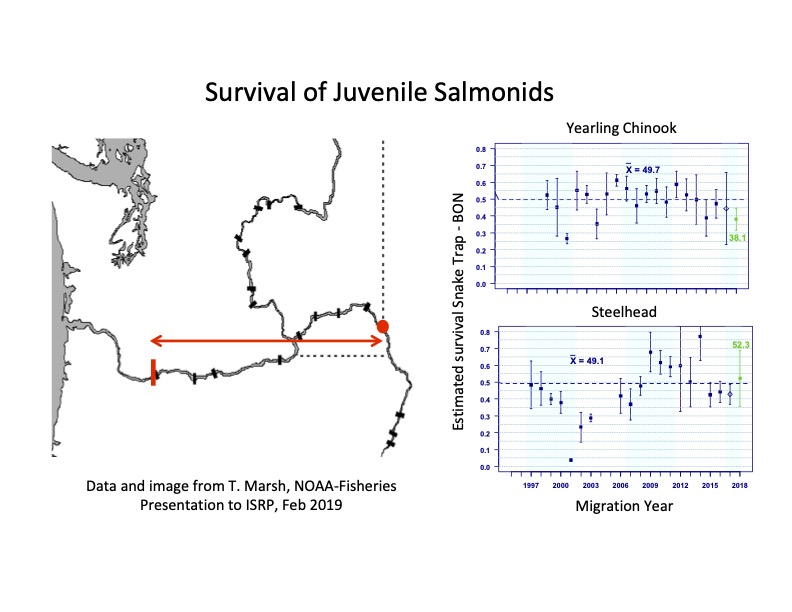forum
library
tutorial
contact

Feds Should Engage Co-ops to Protect Wildlife,
Montana Co-op Leader Says
by Erin Kelly
NRECA, July 27, 2022
|
the film forum library tutorial contact |

|
Feds Should Engage Co-ops to Protect Wildlife,
by Erin Kelly
|
"The dams are on track to achieve standards of 96% average dam survival for young spring chinook
(salmon) and steelhead migrating downstream and 93% for young summer-migrating fish."
 Federal efforts to save endangered species are more likely to succeed when electric cooperatives and other private stakeholders are engaged in the process, a Montana co-op leader told the Congressional Western Caucus on Wednesday.
Federal efforts to save endangered species are more likely to succeed when electric cooperatives and other private stakeholders are engaged in the process, a Montana co-op leader told the Congressional Western Caucus on Wednesday.
"The Endangered Species Act should not be applied in a one-size-fits-all manner, because such a broad federal implementation standard just doesn't work," Gary Wiens, CEO of the Montana Electric Cooperatives' Association, told Western lawmakers at a forum on endangered species recovery.
To be effective, Wiens said the ESA must:
"Throughout the Colorado River Basin, co-ops are working alongside states, tribes, hydropower interests, water managers and federal partners to implement the Upper Colorado and San Juan Endangered Fish Recovery Programs," he said.
"These programs are focused on recovering four threatened and endangered fish. This collaborative program has led to two of the four listed fish species being recommended for downlisting from endangered to threatened. It has also provided ESA compliance for 2,500 water and power projects."
Wiens noted that co-ops in the Pacific Northwest rely on carbon-free hydropower from federal dams on the Lower Snake River to provide electricity to their members.
"Ongoing calls to remove the Lower Snake River Dams to benefit fish ignore the facts," he said. "These dams feature highly advanced and successful fish passage systems. The dams are on track to achieve standards of 96% average dam survival for young spring chinook (salmon) and steelhead migrating downstream and 93% for young summer-migrating fish."
Affordable power produced by the dams is crucial to the economic stability of local communities, Wiens said.
"Montana is no exception," he said. "Our co-ops serve in many of the state's high-poverty counties, including most of the state's Indian reservations. One of these is the Blackfeet reservation in Glacier County. The Blackfeet depend on federal hydropower for affordable electricity. A staggering 31% of Glacier County's residents live below the poverty line."
Montana co-ops have helped restore the greater sage-grouse, Wiens said. Co-ops, which serve half of the sage-grouse protected areas in Montana, have been actively engaged for years in state and federal conservation and recovery initiatives. The state adopted a conservation strategy in 2015.
"Montana's approach is working," he said, pointing to the fact that the population of greater sage grouse more than doubled from 2014 to 2021.
As Congress looks to address challenges posed by the ESA, Wiens said "co-ops stand ready to help this important effort."
learn more on topics covered in the film
see the video
read the script
learn the songs
discussion forum
